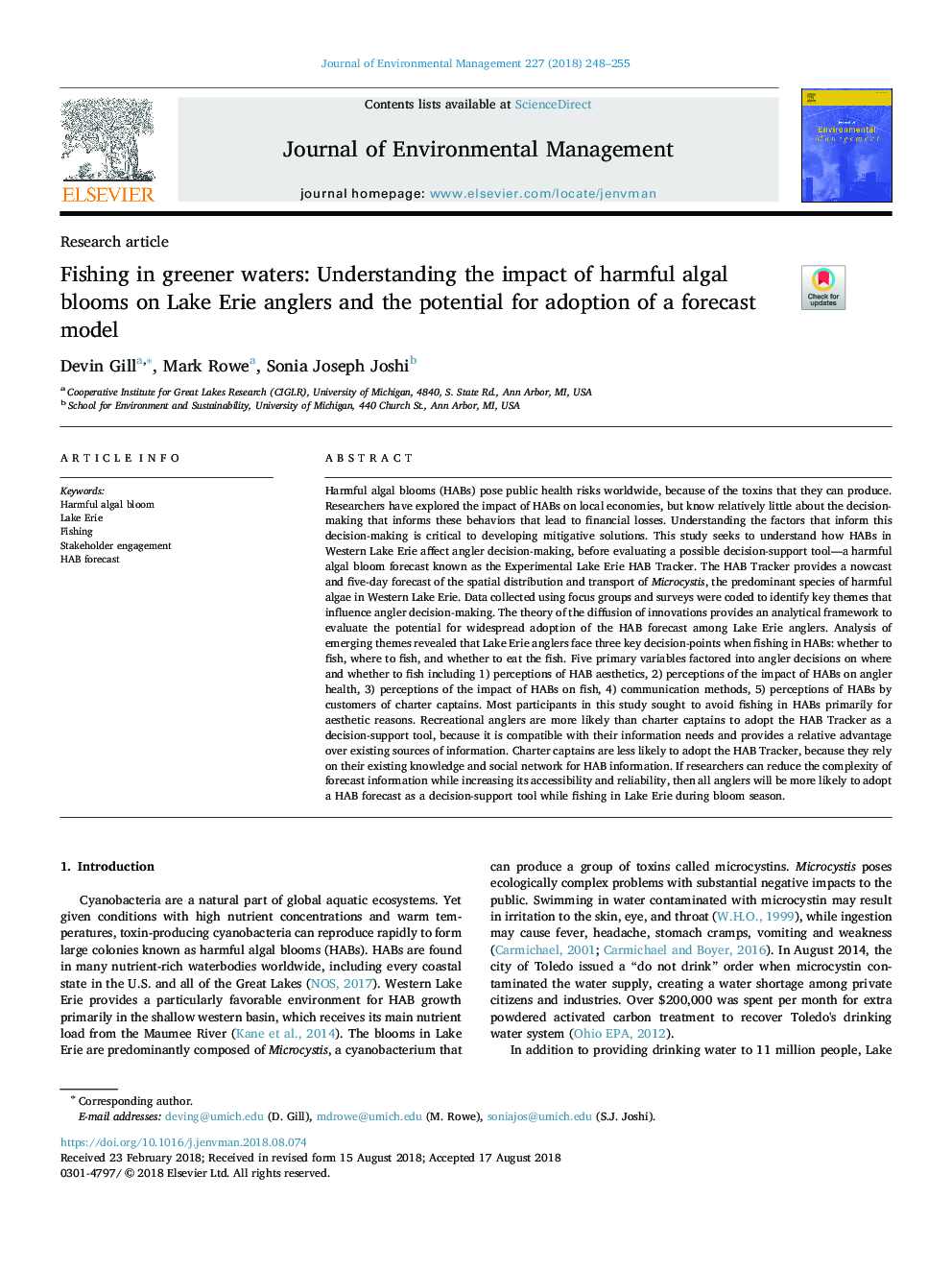| کد مقاله | کد نشریه | سال انتشار | مقاله انگلیسی | نسخه تمام متن |
|---|---|---|---|---|
| 10140618 | 1646036 | 2018 | 8 صفحه PDF | دانلود رایگان |
عنوان انگلیسی مقاله ISI
Fishing in greener waters: Understanding the impact of harmful algal blooms on Lake Erie anglers and the potential for adoption of a forecast model
ترجمه فارسی عنوان
ماهیگیری در آبهای سبز: درک تأثیر بلورهای جلبک مضر بر ماهیگیران دریاچه اروی و پتانسیل پذیرش یک مدل پیشبینی
دانلود مقاله + سفارش ترجمه
دانلود مقاله ISI انگلیسی
رایگان برای ایرانیان
کلمات کلیدی
موضوعات مرتبط
مهندسی و علوم پایه
مهندسی انرژی
انرژی های تجدید پذیر، توسعه پایدار و محیط زیست
چکیده انگلیسی
Harmful algal blooms (HABs) pose public health risks worldwide, because of the toxins that they can produce. Researchers have explored the impact of HABs on local economies, but know relatively little about the decision-making that informs these behaviors that lead to financial losses. Understanding the factors that inform this decision-making is critical to developing mitigative solutions. This study seeks to understand how HABs in Western Lake Erie affect angler decision-making, before evaluating a possible decision-support tool-a harmful algal bloom forecast known as the Experimental Lake Erie HAB Tracker. The HAB Tracker provides a nowcast and five-day forecast of the spatial distribution and transport of Microcystis, the predominant species of harmful algae in Western Lake Erie. Data collected using focus groups and surveys were coded to identify key themes that influence angler decision-making. The theory of the diffusion of innovations provides an analytical framework to evaluate the potential for widespread adoption of the HAB forecast among Lake Erie anglers. Analysis of emerging themes revealed that Lake Erie anglers face three key decision-points when fishing in HABs: whether to fish, where to fish, and whether to eat the fish. Five primary variables factored into angler decisions on where and whether to fish including 1) perceptions of HAB aesthetics, 2) perceptions of the impact of HABs on angler health, 3) perceptions of the impact of HABs on fish, 4) communication methods, 5) perceptions of HABs by customers of charter captains. Most participants in this study sought to avoid fishing in HABs primarily for aesthetic reasons. Recreational anglers are more likely than charter captains to adopt the HAB Tracker as a decision-support tool, because it is compatible with their information needs and provides a relative advantage over existing sources of information. Charter captains are less likely to adopt the HAB Tracker, because they rely on their existing knowledge and social network for HAB information. If researchers can reduce the complexity of forecast information while increasing its accessibility and reliability, then all anglers will be more likely to adopt a HAB forecast as a decision-support tool while fishing in Lake Erie during bloom season.
ناشر
Database: Elsevier - ScienceDirect (ساینس دایرکت)
Journal: Journal of Environmental Management - Volume 227, 1 December 2018, Pages 248-255
Journal: Journal of Environmental Management - Volume 227, 1 December 2018, Pages 248-255
نویسندگان
Devin Gill, Mark Rowe, Sonia Joseph Joshi,
